Choosing the best cameras for YouTube depends on the type of video content you want to produce. Whether you’re vlogging or gaming or filming reviews, there will be different features that are crucial. Cameras with IBIS, or in-body image stabilisation, and vari-angle LCD screens, for instance, are the best cameras for vlogging. Other content creators will appreciate features like mic and headphone inputs for more professional audio, or the ability to shoot 4K video at 60p or 4K video at 120p for flexibility in post-production.
The best cameras for YouTube are also small, lightweight and built for using in a variety of conditions and location, even on the go, with simple controls for making quick adjustments.
The takeaway here is that there is no one best camera for YouTube, but there will be a best camera for the type of content you want to create. There are nearly 40 million YouTube channels out there, all producing many different kinds of content.
The rapid pace of technological development means anyone can be a filmmaker. No longer do you need to be a professional to record and edit compelling videos and share them with an audience. Anyone can pick up a camera and start recording.
To get the best camera for YouTube for your needs, you’ll want to look closely at the specifications we’ve listed out for each camera below. But what these cameras all have in common is that they offer great video quality.
Have we missed a camera you feel should be on this list? Let us know in the comments!
The best cameras for YouTube you can buy today
The options on our list of the best cameras for YouTube were all chosen based off our experience testing them. For a deeper dive into the many different camera types and features available, check out our range of camera buying guides.
Fujifilm X-M5
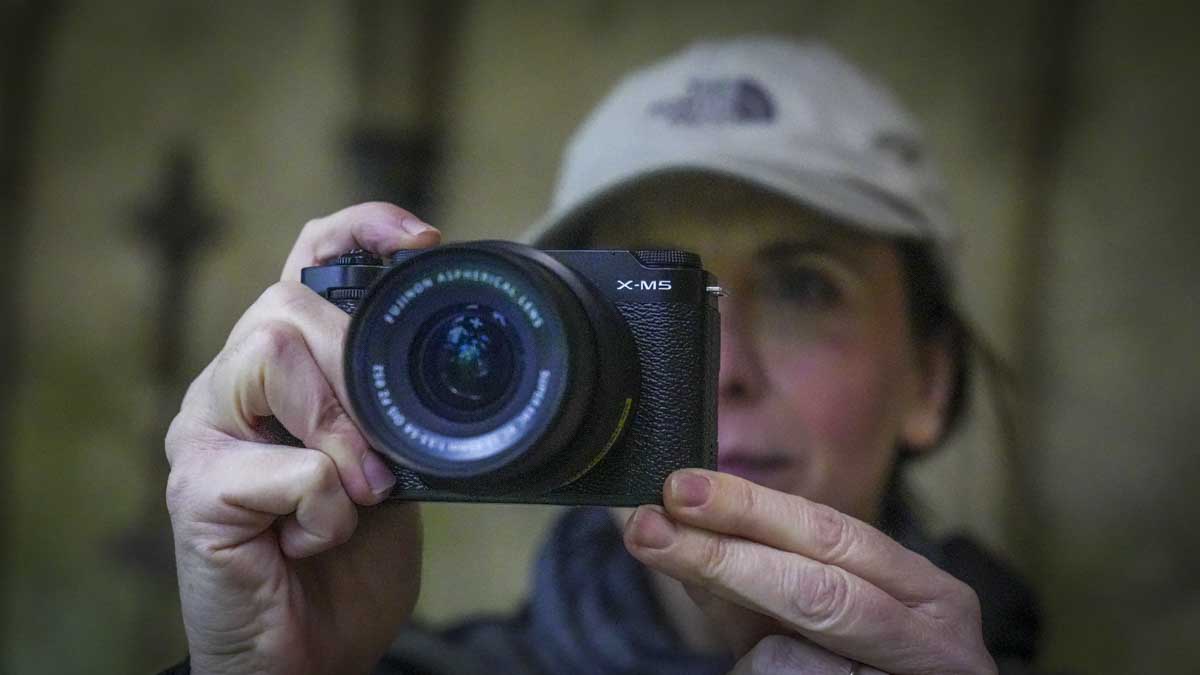
Specification
- Sensor: 26.1MP APS-C X-Trans CMOS 4 sensor
- Processor: X-Processor 5
- ISO Range: 160–12,800 (expandable to 80–51,200)
- Autofocus System: Intelligent hybrid autofocus (contrast and phase detection), Subject detection modes for animals, vehicles, and more
- Continuous Shooting: Up to 15 fps with mechanical shutter, 20 fps with electronic shutter
- Video Recording: 6.2K at 30p, 4K at 60p, Full HD at 240p for slow-motion capture
- Film Simulation Modes: 20 presets including Classic Chrome, Provia, Velvia
- Image Stabilisation: 5-axis in-body image stabilisation (IBIS) up to 7 stops
- EVF: 2.36-million-dot OLED electronic viewfinder
- LCD Screen: 3.0-inch 1.84-million-dot fully articulated touchscreen
- Weight: Approximately 355g (including battery and memory card)
- Dimensions: 123.5mm x 85.2mm x 44.5mm
£899
$899For
- Compact
- Packed with features
- Quick-access film modes
Sony ZV-1
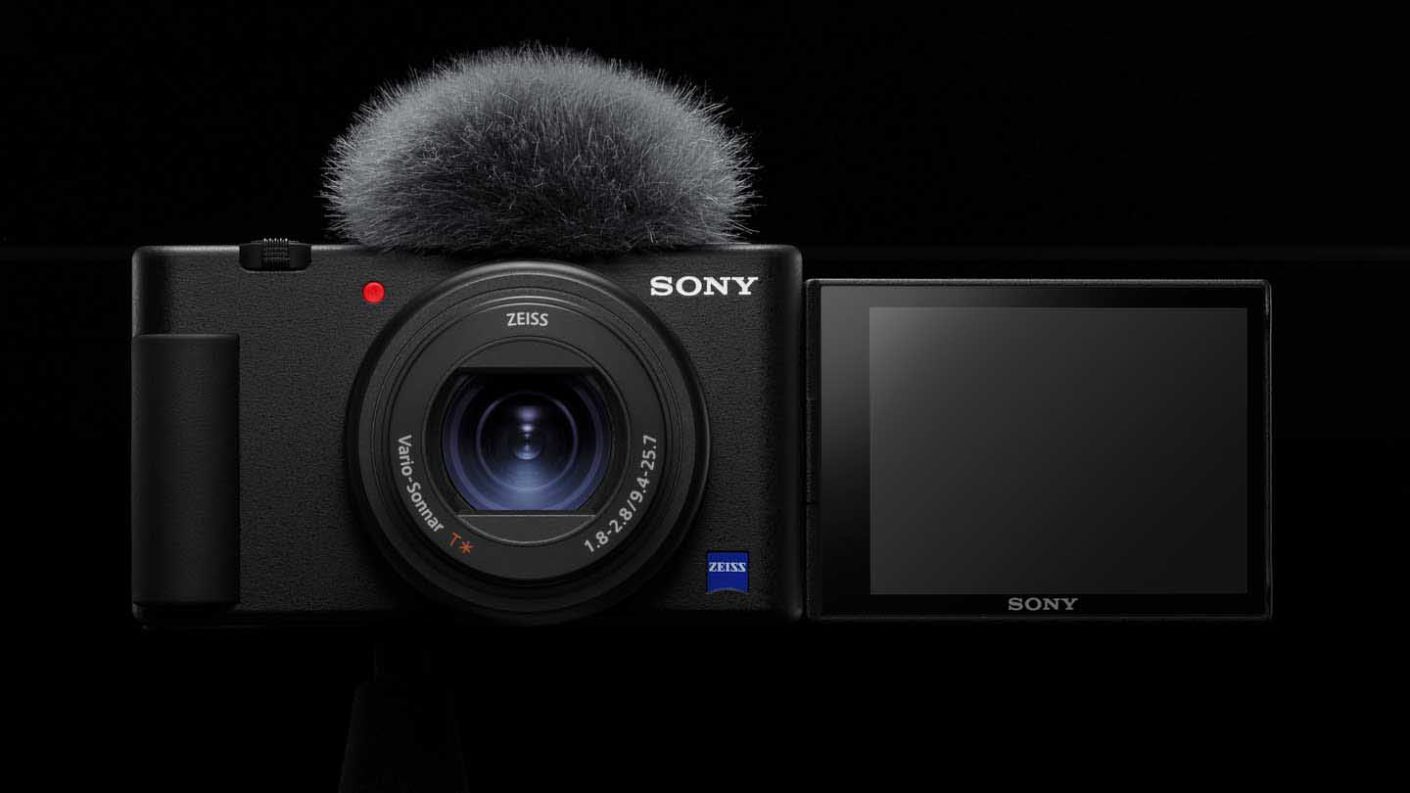
Specification
- Camera type: Compact
- Announced: 26th May 2020
- Sensor: 20.1Mp 1-inch type (13.2mm x 8.8mm) Exmor RS CMOS
- Lens: Zeiss Vario-Sonnar T* 9.4-25.7mmm (24-70mm equivalent) f/1.8-2.8
- Sensitivity range: Stills: ISO 100-25,600, Video: ISO 125-12,800
- Autofocus: 315 focal-plane phase-detection AF points, Eye AF: Humans (stills and video) or Animal (stills)
- Burst Mode: Hi: 24fps, Mid: 10fps, Low: 3fps
- Video: 4K in-body movie recording with full pixel readout and no binning, Log & Gamma options, slow-mo at up to 1000fps
- Viewfinder: No
- Screen: Vari-angle 3-inch touchscreen
- Stabilisation: Optical for stills, optical and electronic for video
- Hotshoe: Multi-interface (can connect an XLR mic via an adapter)
- Storage: SD/SDHC/SDXC
- Dimensions (WxHxD): 105.5 x 60 x 43.5mm / 4 1/4 × 2 3/8 × 1 3/4inches
- Weight: 294g with battery and SD card or body only
Much of the specification on the Sony ZV-1 is familiar from the Sony RX100 series of compact cameras, but there are a few notable differences to make it better for vlogging.
No surprise then to learn that the ZV-1 has a 1-inch type stacked Exmor RS CMOS sensor with 20.1 million effective pixels. That’s a comparatively large sensor for a compact camera and, as we’ve seen with cameras like the Sony RX100 VII, it brings advantages for image quality.
In addition, the Exmor RS CMOS sensor brings phase-detection focusing – which is usually faster and more decisive than contrast detection. The ZV-1 has a total of 315 phase detection AF points which are available for use in stills and video mode.
Being aimed squarely at vlogging enthusiasts, the ZV-1 offers 4K in-body movie recording with full pixel readout and no binning, Log & Gamma options, even slow-mo at up to 1000fps. Sony has also considered audio and offered videographers a number of options, such as the built-in 3-capsule microphone that uses tech from Sony’s advanced camera systems. There’s also a Clear Voice function that can reduce background noise while making human voices clearer. The camera even comes with a dead cat windshield to cut down on wind noise. There’s also a 3.5mm mic port on the ZV-1 so you can connect an external mic.
Overall, the Sony ZV-1 delivers everything that a vlogger could wish for in a compact camera, and it comes with Sony’s excellent AF system. There are features to help inexperienced videographers get good results, the exposure can be controlled automatically or manually and there’s a built-in ND filter plus Log and Gamma control. It makes it easy to produce great 4K video but lets you take control when you want to. It all adds up to a very enticing camera for vloggers and is one of the best cameras for YouTube that you can buy.
£700
$749.99For
- Designed specifically for vloggers but also a capable stills camera
- Stabilised 4K video
- Vari-angle touchscreen
Canon EOS M50 Mark II
Specification
- Camera type: Mirrorless
- Announced: USA: 14th October 2020, UK: 25th February 2021
- Sensor: 24.1Mp APS-C format (22.3 x 14.9mm) CMOS
- Processor: Digic 8
- Lens mount: Canon EF-M
- Sensitivity range: Stills: ISO 100-25,600 expandable to ISO 51,200, 4K Video: ISO 100-6400, Full HD & HD: ISO 100-12,800 expandable to ISO 25,600
- AF system: Dual Pixel CMOS phase detection with up to 3975 positions and 143 automatically selectable points
- Viewfinder: 0.39-type 2,360,000-dots OLED EVF
- Screen: Touch-sensitive vari-angle 3.0-inch LCD with 1,040,000 dots
- Video resolution: 4K (3840 x 2160) at 23.98, 25 fps Full HD: (1920 x 1080) at 59.94, 50, 29.97, 25, 23.976 fps), HD (1280 x 720) at 119.9, 100, 59.94, 50 fps
- Max continuous shooting rate: 10fps for up to 36Jpegs or 10 raw files
- Shutter speed range: 30-1/400 sec, Bulb
- Built-in flash: GN (ISO 100) 5
- Battery: Li-ion LP-E12, Viewfinder: Approx. 250 shots Live view: Approx 305 shots
- Dimensions (W x H x D): 116.3 x 88.1 x 58.7mm
- Weight: 387g (black), 390g (white) including battery and memory card
The Canon EOS M50 Mark II makes a relatively modest update on one of Canon’s most popular mirrorless cameras. Inside it has the same 24Mp APS-C format sensor paired with the same Digic 8 processing engine.
Like its predecessor, the Canon EOS M50 Mark II can shoot 4K video at up to 24p but there’s an additional 1.5x crop applied to the framing and the autofocus system relies on contrast detection. Switch to Full HD or stills shooting and the phase detection system that is enabled by the Dual Pixel sensor design becomes active.
The key upgrades made for the Mark II are eye tracking in both stills and video mode, vertical video recording and the ability to stream live to YouTube video a smartphone hotspot.
Find the best deals on the Canon EOS M50 Mark II at Amazon UK and Amazon US.
£589
$599For
- Excellent image quality
- Superb implementation of touch-control
- Good-quality viewfinder built-in
Olympus OM-D E-M5 Mark III
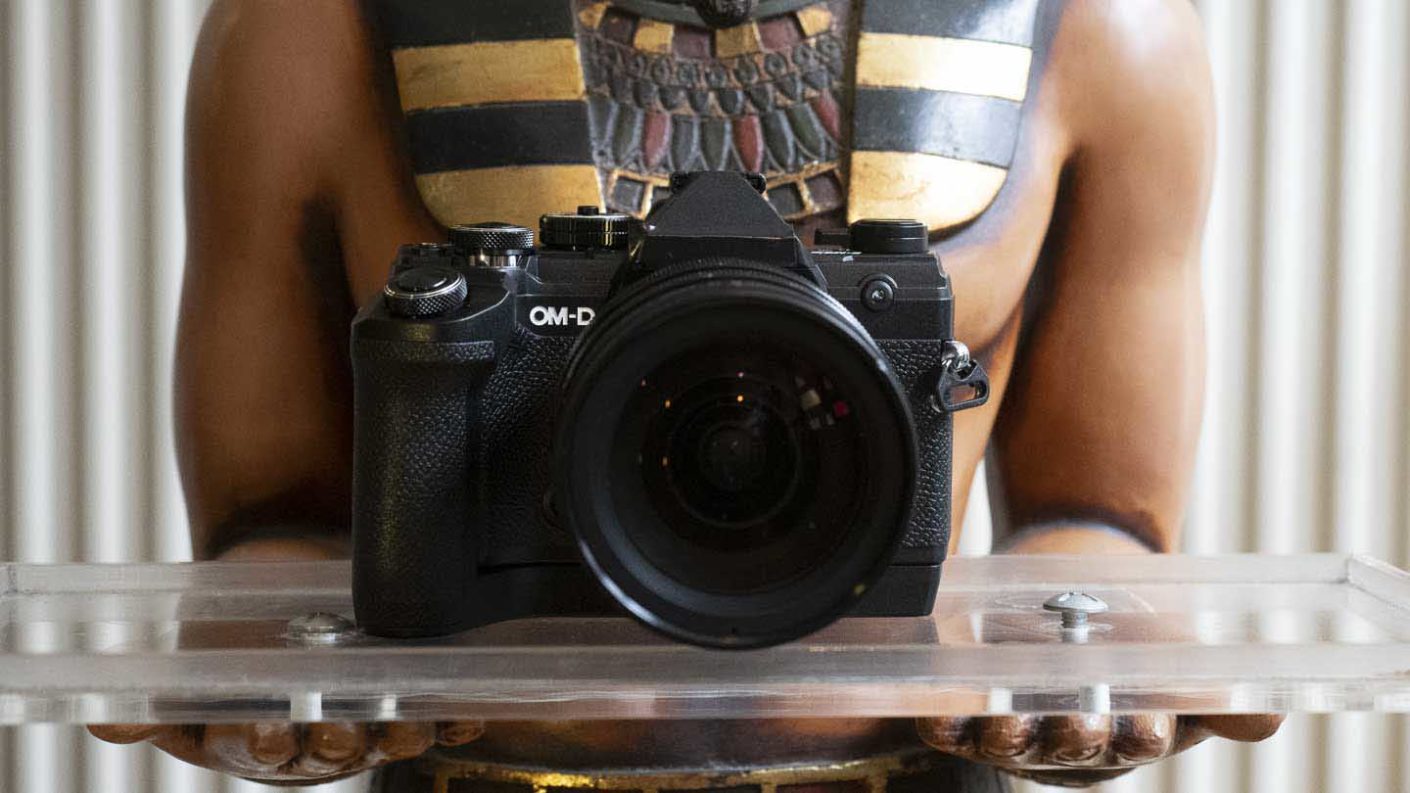
Specification
- Camera type: Mirrorless camera
- Sensor: 20.4Mp Live MOS Micro Four Thirds sensor
- Lens mount: Micro Four Thirds
- Processing engine: TruePic VIII
- Sensitivity range: ISO 64-25,600
- Autofocus system: Hybrid with 121 (all cross-type) phase-detection AF points
- Maximum continuous shooting rate: Mechanical shutter: 10fps with focus and exposure fixed at the start of the burst, 6fps with C-AF, Electronic Shutter 30fps and 10fps
- Max video resolution: C4K 24p at up to 237Mbps / 4K 30p, 25p, 24p at 102Mbps
- Live Bulb Shooting Options: Live Composite, Live Time, Live Bulb, Focus Bracketing, Focus Stacking, 50Mp High Res Shot modes
- Viewfinder: 2,360,000-dot electronic viewfinder
- Screen: Vari‑angle 3.0-inch 1,037,000-dot touchscreen
- Dimensions (W x H x D): 125.3 x 85.2 x 9.7mm
- Weight: 414g including battery and memory card, 366g body only
The Olympus OM-D E-M5 Mark III sits below the OM-D E-M1 Mark III in Olympus’s interchangeable lens camera lineup. It has a smaller body, which makes it a great choice for vloggers and videographers. It also produces nice images and the stabilisation system is incredible, enabling you to hand-hold the camera and get sharp images with exposures measured in whole seconds.
Olympus has upgraded the video capability of the OM-D E-M5 Mark III in comparison with the Mark II model. The new camera is capable of shooting C4K 24p video at up to 237Mbps or 4K 30p, 25p, 24p video at 30p 102Mbps.
What’s more, Full-HD video can be shot at up to 120p for slow-motion playback.
Further good news is that there’s a Flat picture mode. This isn’t as flat at the Log mode introduced by the E-M1X, but it gives a bit more scope for post-capture grading.
There’s also a mic jack built-in, rather than in an optional grip and the video autofocus performance has been improved.
Overall, the Olympus OM-D E-M5 Mark III is a little powerhouse of a camera. With its superb image stabilisation system you can shoot excellent quality video footage without the need for a gimbal.
£1100
$1199.99For
- Images full of detail
- Low noise at higher ISOs
- Superb stabilisation
Nikon Z50
Specification
- Camera type: Mirrorless
- Sensor: 20.88Mp APS-C / DX (23.5x15.7mm) CMOS
- Processing engine: Expeed 6
- Lens mount: Nikon Z mount
- Sensitivity range: ISO 100-51,200; expands to 204,800
- Viewfinder: 0.39-inch 2,360,000-dot OLED electronic viewfinder
- Screen: Tilting 3.2–inch 1,040,000-dot touchscreen
- Autofocus: Hybrid (phase and contrast detection) AF with 209 AF points, Eye AF and Subject Tracking. Firmware V.20 adds Eye-detection AF for Animals as well as humans
- Continuous Shooting: 11fps with continuous AF and exposure metering
- Video: 4K at 30fps and Full-HD at 120fps
- Storage: SD/SDHC/SDXC UHS-I
- Connectivity: Snapbridge 2.6; Wi-Fi, Bluetooth
- Dimensions (W x H x D): 126.5 x 93.5 x 60 mm / 5 x 3.7 x 2.4-inches
- Weight: 450g / 15.9oz with battery and memory card but without body cap, 395g /14oz body only
Nikon includes the SmallRig Vlogging Mounting Plate for Nikon Z50 Camera LCN2525 in a Vlogger Kit with the Z50 and 16-50mm lens, and together this makes a great system for vloggers to work with. The kit also includes a Rode VideoMicro microphone and Manfrotto Pixi mini tripod.
The SmallRig plate screws onto the bottom of the camera and has a lip or ridge along its front that’s shaped to fit around the Z50, holding it in place and preventing it from twisting around. Meanwhile the Pixi can serve as a tripod or gimbal, and the Rode VideoMicro helps you achieve professional audio quality.
The camera itself can shoot 4K video at 30p, or slow motion fans will appreciate its Full HD at 120fps capability.
There’s a mic input to enable better quality sound to be recorded via an external mic. It’s also possible to create Time-lapse videos in-camera.
The Z50’s small body size and ergonomic grip, coupled with the SmallRig kit, make it ideal for vlogging or filming on the go.
£849
$989For
- Superb build and handling
- AF fast and accurate in low light
- Weatherproof
Fujifilm X-S10

Specification
- Camera type: Mirrorless
- Announced: 15th October 2020
- Sensor: 26.1MP X-Trans CMOS 4 APS-C sensor
- Processing engine: X-Processor 4
- Lens mount: X-Mount
- Sensitivity range: ISO 160-12,800 expandable to ISO 80-51200
- Viewfinder: 2.36-million-dot EVF (100% coverage) with 0.62x magnification
- Screen: Vari-angle 3-inch 1.04million-dot touchscreen LCD
- Autofocus system: Intelligent hybrid with up to 425 selectable AF points
- Continuous shooting: Mechanical Shutter: 8fps, Electronic Shutter: 20fps continuous shooting at full resolution with AF
- Max video resolution: DCI 4K (4096 x 2160) at 29.97/25/24/23.98fps, 4K/30p 4:2:0 8-bit, 4K/30p 4:2:2 10-bit video via the HDMI, Full-HD at up to 240p
- Storage: SD/SDHC/SDXC UHS-II
- Dimensions (WxHxD): 126.0x85.1x65.4mm
- Weight: 465g including battery and card
The Fujifilm X-S10 is the first in a new line of X-series cameras from Fujifilm. It’s aimed at experienced DSLR users who are looking to switch to a mirrorless camera but who don’t fancy the traditional exposure controls of models like the Fujifilm X-T4 and X-T3.
Inside the X-S10 there’s the same 26.1Mp APS-C format X-Trans CMOS 4 sensor as X-Processor 4 as is in the Fujifilm X-T4, which means it can capture the same quality images. It also means that the X-S10 has 425 individually selectable AF points available for use with its hybrid autofocus system – and it’s a snappy performer.
The X-S10 has in-body image stabilisation (IBIS) on board and it can deliver up to 6EV shutter speed compensation.
Further good news about the X-S10 is that its touchscreen is mounted on a vari-angle hinge, which makes it ideal for vlogging and shooting selfies. It can also shoot good-quality uncropped DCI 4K video (4096 x 2160) at 29.97/25/24/23.98fps. Internal recording maxes out at 8-bit 4:2:,0 but if there’s an external storage unit connected via HDMI it’s possible to record in 4:2:2 10-bit. A 3.5mm microphone port is built in and a USB-C adapter is included in the box to connect headphones.
You can find the Fujifilm X-S10 on Amazon UK and Amazon USA
£949
$999For
- In-body image stabilisation
- Vari-angle touchscreen
- Excellent sensor and processor combination
DJI Osmo Pocket

Specification
- Camera type: Stabilised action cam
- Sensor: 12Mp 1/2.3-inch CMOS
- Lens: 26mm (35nn focal length equivalence) f/2.0
- Sensitivity range: ISO 100-3,200
- Stills shooting modes: Single Shot, Panorama, Timelapse, Motionlapse, Hyperlapse
- Video resolution and frame rates: 4K Ultra HD: 3840×2160 24/25/30/48/50/60p, FHD: 1920×1080 24/25/30/48/50/60/120p
- Max Bit rate: 100Mbps
- Dimension: 121.9×36.9×28.6mm
- Weight: 116g
At £329 the Osmo pocket has been priced aggressively and is aimed at today’s growing YouTube and Instagram generation.
However, if you’re a relatively normal individual and want a decent video camera to have some fun with the family or friends, the Osmo Pocket should also definitely be considered.
Inside is a 1/2.3-inch CMOS sensor, 12mp effective which is fronted by a f/2.0 lens with an 80º FOV. ISO range is between 100-3200 for both video and stills.
Video is recorded in 4K Ultra HD at 24/25/30/48/50/60p and in Full HD at 24/25/30/48/50/60/120p. Movies are captured in MP4/Mov and still JPEG, DNG or both. Files are stored on a MicroSD up to 256GB.
It features an electronic shutter with a range of between 8s – 1/8000s. Still, photo modes include Single Shot, Panorama, Timelapse, Motionlapse.
You’ll also find Mechanical image stabilisation, and a 875mAh battery supplies the Pocket with 140 minutes of power and takes 73 minutes to charge.
The Osmo Pocket is small, measuring just 121.9 x 36.9x 28.6mm and weighing in at 116g.
The feature list is impressive, and the connection through to the Mimo App greatly extends the functionality. And the fact that the design is modular, enabling you to add extras such as the jog wheel, phone adapter or plug in an external mic also boosts the abilities of this small device further.
£329
$399For
- Excellent stabilisation
- High-quality video footage
- Very easy to use and video can be edited on a smartphone using the DJI app or on a computer
Best cameras for YouTube vlogging
If vlogging is your niche, these are our picks for the best cameras for YouTube vlogging. The Sony option sits at the beginner end and is simple to use, yet very capable. For more experienced vloggers, the Panasonic GH5 II offers a wider range of functionality. For a more in-depth look at your options in this area, check out our guide to the best cameras for vlogging.
Sony ZV-E10

Specification
- Camera type: Mirrorless
- Announced: 27th July 2021
- Sensor: 24.2Mp APS-C format (23.5mm x 15.6mm) Exmor CMOS
- Sensitivity range: Stills: ISO 100-32,000 expandable to ISO 50-51,200, Video: ISO 100-32,000
- Autofocus: 425 phase-detection AF points, 425 contrast-detection AF points, Eye AF: Humans or Animal (stills and video)
- Burst Mode: Hi+: 11fps, Hi: 8fps, Mid: 6fps, Low: 3fps
- Video: 4K 3840 x 2160 (4:2:0, 8bit, NTSC) 30p (100Mbps / 60Mbps), 3840 x 2160 (4:2:0, 8bit, NTSC) 24p (100Mbps / 60Mbps), 3840 x 2160 (4:2:0, 8bit, PAL) 25p (100Mbps / 60Mbps)
- Viewfinder: No
- Screen: Vari-angle 3-inch 921,600-dot touchscreen
- Stabilisation: Electronic for video - SteadyShot Standard or SteadyShot Active
- Hotshoe: Multi-interface
- Storage: SD/SDHC/SDXC
- Dimensions (WxHxD): 115.2 x 64.2 x 44.8 mm / 4 5/8 x 2 5/8 x 1 13/16 inches from grip to monitor
- Weight: 343g / 12.1oz with battery and SD card
Along with a few quite advanced features, the Sony ZV-E10 has quite an attractive specification for novice vloggers, including some clever options such as Background Defocus, which enables quick switching between a blurred background and a sharp background, and FacePriority exposure, not to forget Sony’s superb autofocusing system.
The Sony ZV-E10 has a 24.2-megapixel APS-C Exmor CMOS sensor and a BIONZ X image processing engine. It also has some of the vlogging-specific features found on the ZV-1 compact camera. There’s also the “Product Showcase Setting” mode that sets the camera to change the focus automatically from the subject’s face to an object being held to the camera.
There are also some advanced video features such as 4K (3840 x 2160) video shooting and Full HD Slow Motion at up to 120). Plus, electronic image stabilisation with Active Mode for stable video recording when walking and shooting hand-held. Further, the ZV-E10’s advanced autofocus technology provides fast, precise AF with tracking and there’s a high-quality audio system.
It may come as a surprise to discover that the ZV-E10 doesn’t have sensor-shifting in-body image stabilisation. Instead it relies on lens-based stabilisation for stills and electronic stabilisation for video. The latter can be set to Standard or Active, or it can be turned off.
Acknowledging that audio is a critical part of vlogging, the ZV-E10 has three means of recording sound. Firstly, there’s the on-board directional 3-capsule mic that’s optimised to pick-up voices in front of the camera. Like the ZV-1’s mic, this can be covered with a tiny dead kitten that slips into the multi-interface shoe.
Mentioning the multi-interface shoe gives a clue to the second microphone option. It’s compatible with a selection of Sony mics for camera-mounted recording. Lastly, there’s a 3.5mm port available for connection an external mic, be that a lavalier, a wireless mic such as the Rode Wireless Go II or a shotgun mic.
Sony has also included a 3.5mm headphone jack for clear audio monitoring. What’s more, the ZV-E10 is capable of streaming live when its connected via USB-C to a device connected to the internet.
£680
$698For
- Designed specifically for vloggers but also a capable stills camera
- Great AF system
- Good audio options
Fujifilm X-H2
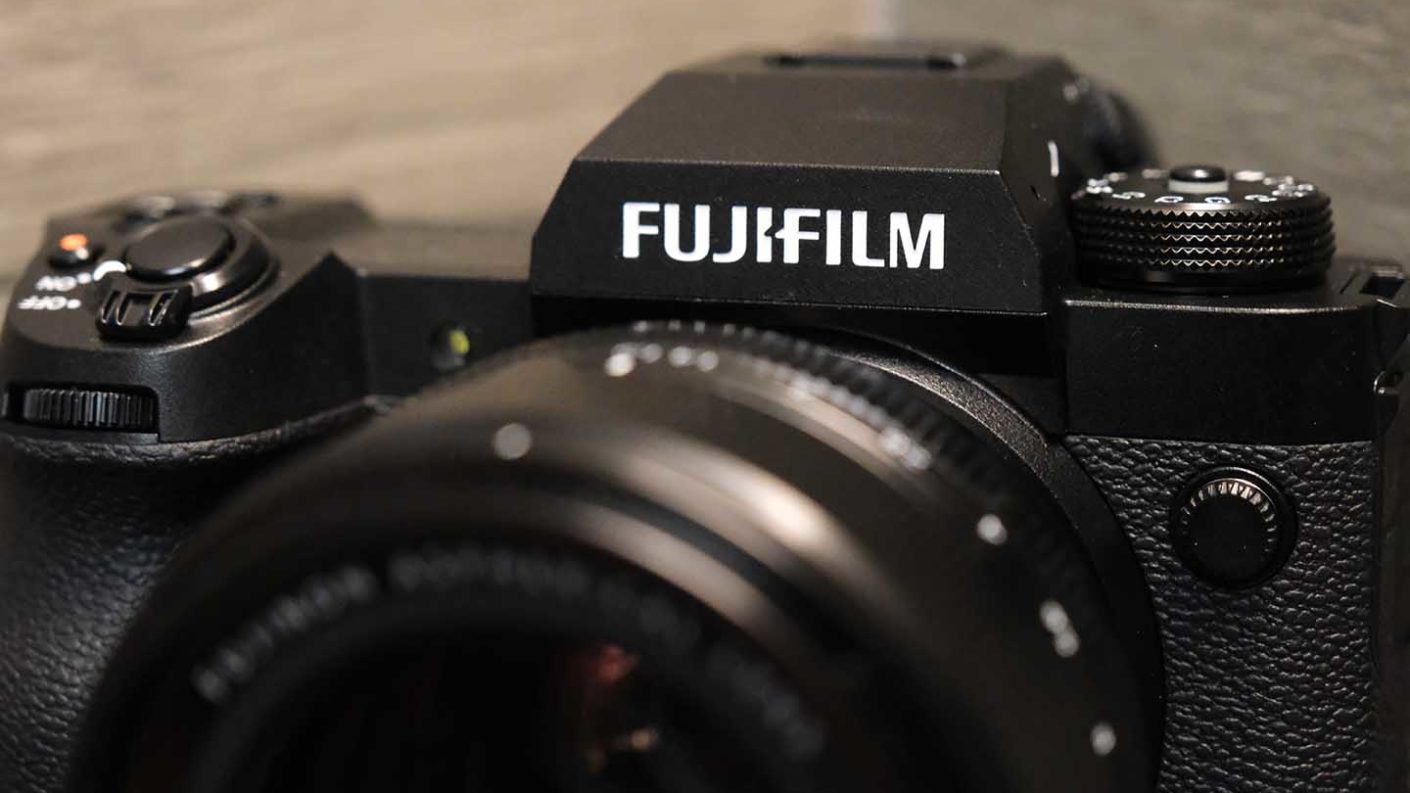
Specification
- Camera Type: Mirrorless
- Announced: September 8, 2022
- Lens Mount: Fujifilm X
- Sensor: 40-megapixel X-Trans5 BSI APS-C Imaging Sensor
- Processing Engine: X-Processor 5
- Video: 8K at 30p, 6.2K at up to 30p, DCI4K at up to 60p, HD at 240p Apple ProRes internally in 10-bit at 4:2:2
- Sensitivity: ISO 125 to 12,800 (expandable to ISO 64 to 51,200)
- IBIS: Up to 7 stops of Internal Body Image Stabilization
- Max Shutter Speed: 1/180,000 Max Shutter speed with electronic shutter
- Continuous Shooting: 15fps with mechanical shutter, 20fps with electronic shutter
- Viewfinder: 5.76-million-dot EVF with 0.8x magnification
- Rear Screen: 1.62 million-dot vari-angle LCD
- Memory: One CFexpress Type B memory card slot and one UHS-II SD memory card slot
When Fujifilm split its flagship X-H series in two directions, the big headline of the X-H2 was its 40-million-pixel sensor for capturing high-resolution stills. But of equal billing – and more interest to budding YouTubers – is its 8K video capability. YouTube doesn’t support 8K yet, of course, but recording in 8K let’s you create ultra-high-quality 4K footage in post-production.
Along with that you can also shoot 6.2K video at up to 30p, DCI4K at 60p, 4K at 30p and Full HD at 240fps for slow-motion video.
The Fujifilm X-H2 can record continuously for up to 160 minutes in temperatures up to 25C, and you can extend this time to 240 minutes with the optional X-H2 clip-on fast.
There’s also F-Log and F-Log2 colour profiles for those who want to grade their footage. The latter extends the camera’s dynamic range to more than 13 stops.
Add in the camera’s IBIS, which frees you to shoot handheld in many situations, and its ultra-bright vari-angle touchscreen, and the X-H2 is the ideal camera for YouTubers looking for a flexible option.
£1899
$1999 / €2199Panasonic Lumix GH5 II

Specification
- Camera type: Micro Four Thirds mirrorless
- Announced: 25th May 2021
- Sensor: 20.3 Mp Live MOS Sensor
- Maximum video resolution: C4K (4096x2160)
- Video Quality: 59.94p, 200Mbps (4:2:0 10-bit LongGOP) (H.265/HEVC, LPCM, High-Res Audio), 59.94p, 150Mbps (4:2:0 8-bit LongGOP) (H.264/MPEG-4 AVC, LPCM, High-Res Audio), 29.97p, 400Mbps (4:2:2 10-bit ALL-Intra) / 150Mbps (4:2:2 10-bit LongGOP) / 100Mbps (4:2:0 8-bit LongGOP) (H.264/MPEG-4 AVC, LPCM, High-Res Audio), 23.98p, 400Mbps (4:2:2 10-bit ALL-Intra) / 150Mbps (4:2:2 10-bit LongGOP) / 100Mbps (4:2:0 8-bit LongGOP) (H.264/MPEG-4 AVC, LPCM, High-Res Audio)
- Video format: MOV: H.264/MPEG-4 AVC, H.265/HEVC , MP4: H.264/MPEG-4 AVC, H.265/HEVC
- Log Mode: V-Log L pre-installed
- Sensitivity range: Stills: ISO 200-25600 (expandable to ISO 100-25600), Video: ISO 200-12800 (expandable to ISO 100-12800)
- Stabilisation: 5-axis Dual IS II giving 6.5EV shutter speed compensation
- Viewfinder: 3.68m-dot OLED with 60/120fps refresh rate
- Touchscreen: 3-inch 1.84m-dot Free-angle touchscreen
- Storage: Dual UHS-II SD slots
- Maximum stills continuous shooting rate: AFS/MF: 12 frames/sec, AFC: H: 9 frames/sec (with Live View), 6K Photo: 30 frames/sec, 4K Photo: 60 frames/sec, 30 frames/sec
- Dimensions: 138.5 x 98.1 x 87.4 mm / 5.45 x 3.86 x 3.44 inch (excluding protrusions)
- Weight: 727g / 1.60 lb with SD card and battery
While it doesn’t make a dramatic upgrade on the GH5, the Panasonic Lumix GH5 II puts ticks in lots of boxes. It’s a very capable video camera and ideal for modern content creators who don’t need a higher resolution sensor.
Inside the Panasonic GH5 II is the same 20.3Mp sensor as is inside the GH5 but it has new AR (Anti-Reflective) coating that reduces flare and ghosting. It’s also coupled with the Venus Engine 10 processing engine that’s in the Panasonic Lumix S1H – the company’s full-frame video-centric mirrorless camera.
This combination enables the GH5 II to capture 10-bit 4:2:0 C4K (4096 x 2160) video at up to 60fps and 200Mbps or 10-bit 4:2:2 C4K at up to 30fps and 400Mbps. If an external recorder is connected via HDMI, it’s also possible to record C4K 4:2:2 10-bit 60p video externally while simultaneously recording in 4:2:0 to the card in the camera.
There’s also a selection of 4K and 6K anamorphic modes.
Although the GH5 II cannot shoot raw video, V-Log L is pre-installed which means that it’s possible capture very flat footage that’s well-suited to grading. Helpfully, there’s a Log Assist mode so you can assess the footage more easily when you’re shooting in V-Log L. It’s also possible to display a waveform or vector scope to guide exposure.
Panasonic has enhanced the GH5 II’s live streaming capability and it can stream via a wired or wireless connection to a router or a smartphone running Panasonic’s Lumix Sync app. Panasonic has also promised a firmware update by the end of the year to enable wired RTP/RTSP streaming.
Its vari-angle screen is also ideal for vloggers.
£1499
$2100For
- Extensive array of features
- Excellent stabilisation system
- Simple live streaming via smartphone
Best cameras for YouTube beginners
If you’re new to all this and want a camera that’s simple to use, these are the best cameras for YouTube beginners. Small and simple to use, yet powerful and capable.
Canon PowerShot G7 X Mark III

Specification
- Camera type: Compact
- Sensor: 20.1Mp 1-inch type Stacked CMOS
- Lens: 24-100mm (35mm equivalent) f/1.8 – f/2.8
- Viewfinder: 0.39-inch type 2,360,000-dot OLED
- Screen: 3-inch 1,040,000-dot tilting touchscreen
- Autofocus system: AiAF (31-point, Face Detection or Touch AF with Object and Face Select and Track), 1-point AF (any position or fixed centre)
- Sensitivity range: ISO 125-12,800 expandable to ISO 25,600
- Dimensions (W x H x D): 105.5 x 60.9 x 41.4mm
- Weight: 304g with battery and memory card
While Canon didn’t really market the PowerShot G7 X Mark II at vloggers, it proved a popular choice with those users. It has a magical combination of a comparatively large sensor, a bright lens with a useful focal length range equivalent to 24-100mm, a flip-up touch-screen and a compact form. It’s ideal for slipping in your pocket to take everywhere and for using at arm’s length.
With the Canon PowerShot G7 X Mark III, Canon didn’t make a huge upgrade on the previous camera, but there are a couple of features that should further appeal to vloggers and YouTubers.
Firstly, whereas the Mark II’s maximum video resolution is Full-HD (1920 x 1080) at 59.94 / 50 / 29.97 / 25 / 23.98 fps, the PowerShot G7 X Mark III is capable of shooting 4K video 3840 x 2160 at 29.97 / 25fps without cropping. In addition, it can shoot Full HD (1920 x 1080) footage at 119.9 / 100 / 59.94 / 50 / 29 .97 / 25 fps. Those upper frame rates make high-quality slow-motion video possible.
The clincher, however, is that the Canon PowerShot G7 X Mark III is able to live-stream video. That’s big news. Instead of having to shoot on your phone or use a complex set-up, you can shoot directly to Youtube using a dedicated camera.
There’s also a clean HDMI output should you want it. Another key advantage of the G7X III for videographers is that it has a 3.5mm mic port.
It may be diminutive, but rest assured this is a powerful camera for video and one that should serve any aspiring YouTuber well.
£700
$699.99For
- Live-streaming possible
- No cropping in 4K video mode
- Excellent blend of touch and button/dial control
GoPro Hero11 Black

Specification
- Imaging Sensor: 1/1.9-inch 8:7 aspect ratio
- Max Resolutions and framerates: 5.3K60, 4K120, 1080p240
- Color depth: 10-bit
- Image Stabalisation: HyperSmooth 5.0 and 360º Horizon Lock
- Touch Screen display: Yes
- Photo reolsution: 27mp
- Auto tagging of footage: Yes
- Enduro battery: Included
- Dimensions: 71.8x33.6x50.8mm
- Weight: 154g
The world’s most popular and best action camera is also one of the best cameras for YouTube beginners. Why? It’s simple to use. You can control the camera via the GoPro app on your smartphone, or even use your voice.
And the with the Hero11 Black you get a giant upgrade in the form of a new, larger sensor and an upgraded HyperSmooth 5.0 digital image stablization technology that rivals even the best gimbal stabilizers. Couple this with the big upgrade from last year’s Hero10 Black, the GP2 processor, which delivers more power, and the Hero10’s boost to framerate options and an uplift in video resolutions, and you have a very powerful recording tool in a pocket size body.
What’s more, there’s a huge ecosystem of GoPro accessories that will allow you to capture cool POV shots from different angles. And for filming on the go, GoPro’s Hypersmooth image stabilisation technology is second to none.
£499
$499For
- Great quality video
- Excellent stabilisation and horizon correction
- 4K 120p video for slow motion creation
Insta360 GO 2
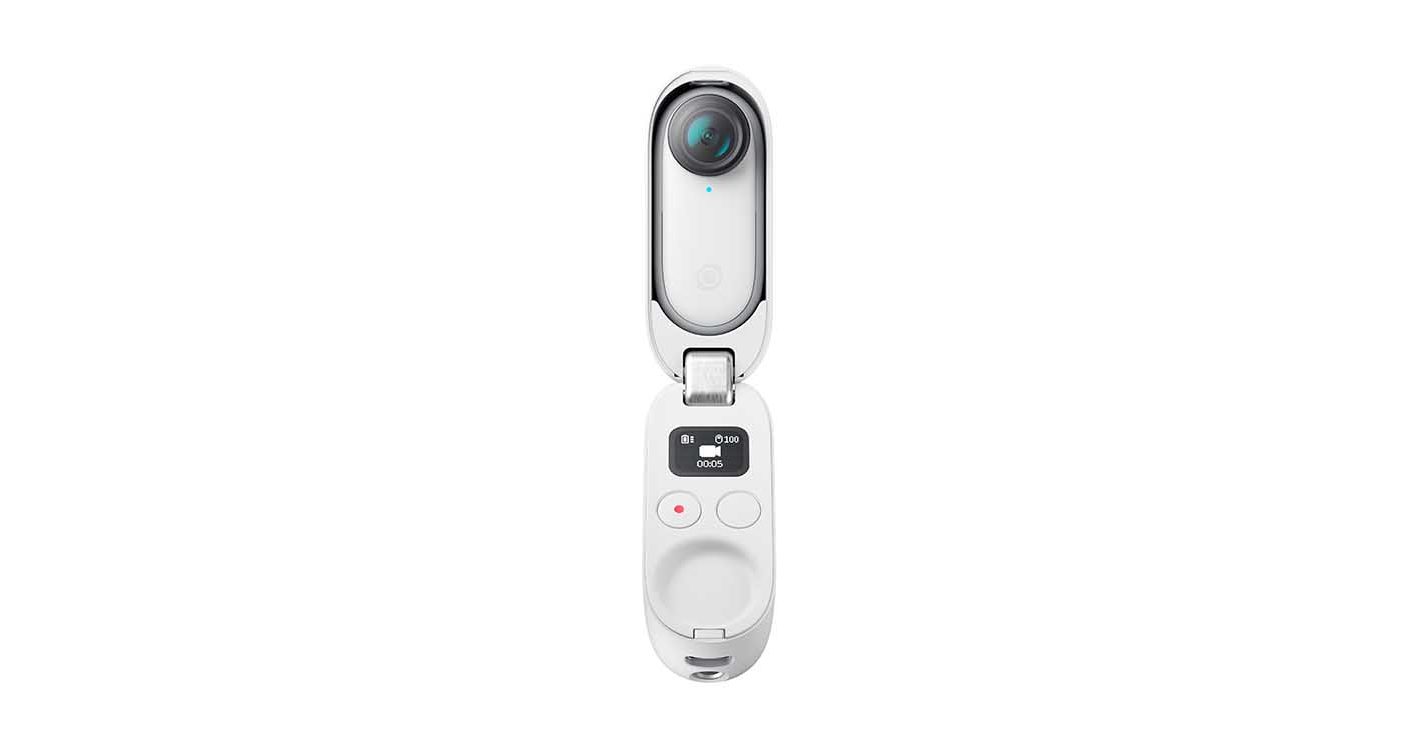
Specification
- Shooting Modes: Video, Pro Video, Photo, HDR Video, Timeshift, Timelapse, Nightlapse, Slow Motion
- Video: 2560x1440 at 50fps, 30fps / 1920x1080 at 50fps, 30fps
- Recording Limit: Pro Video: 10min / Video: 15min / FPV: 30min
- Waterproof: IPX8 (down to 4m / 13ft)
- Internal Storage: 32GB
- Connectivity: BlueTooth / Wi-Fi
- Weight: 26.5g / 0.93oz (charge Case 63.5g / 2.24oz)
- Dimensions: 52.9 x 23.6 x 20.7mm / 2.08 x 0.93 x 0.81in
The Insta360 GO 2 is the smallest action camera you can buy (as of winter 2022), the most user-friendly and has something to offer everyone. If you make POV videos, its diminutive size and range of sturdy magnetic mounts will really appeal. If you’re new to video or just want something small and easy to take on your everyday adventures, the GO 2 is ideal. It is a pocket camera in the truest sense of the word.
Sure, we’re in the age of 4K and the GO 2 shoots 2K video, but this is a consumer camera designed for sharing content quickly, on the… GO. Video at 2K resolution is more than enough for sharing with your friends and family, and also helps keep file sizes down and sensor size small, allowing for a hugely portable device that is more worthy of the ‘pocket camera’ title than any compact camera or smartphone you may own.
£295
$300For
- Miniscule size
- Easy to use
- Waterproof
- Good video quality


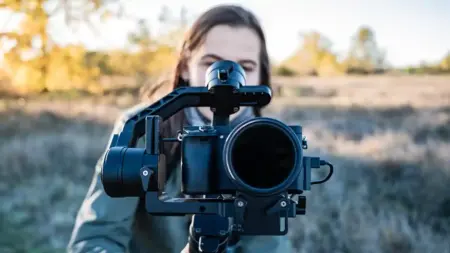
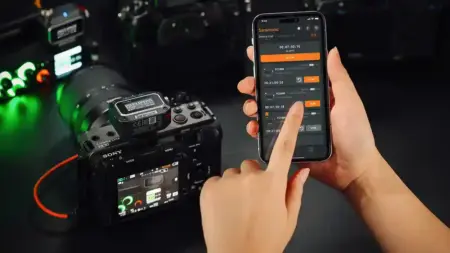
Leave a Reply